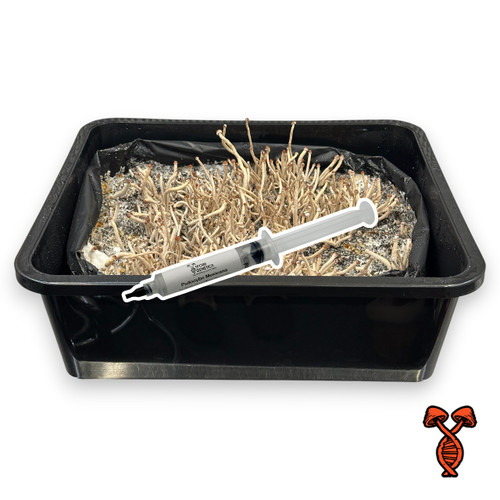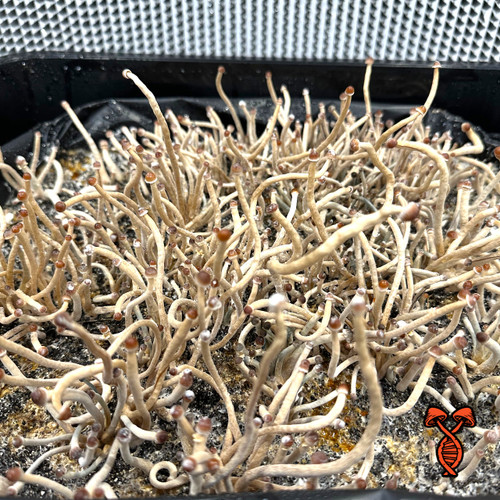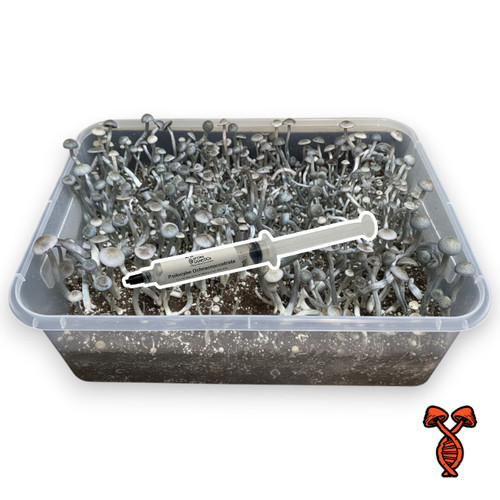Psilocybe Tampanensis Isolated Spore Syringe – 10cc | Spore Genetics
Also known as “Philosopher’s Stone Mushroom” or Tamps - rare sclerotia forming Psilocybe species
Psilocybe Tampanensis is one of the rarest documented psilocybin containing mushrooms on Earth. First discovered in 1977 near Tampa, Florida, only a single specimen was ever collected—and no additional Florida collections were documented for 44 years. That lone mushroom was cloned by the late Dr. Steven Pollock, whose culture became the foundation of every modern Psilocybe tampanensis lineage circulating today.
This Isolated Spore Syringe provides researchers with a clean, stabilized sample of this historically important species, revered for its unique ability to produce dense sclerotia—the “philosopher’s stones” that form underground as a survival structure.
Species Background
Discovery & Taxonomy
· Discovered: 1977, Tampa, Florida
· Described by: Steven Pollock & Gastón Guzmán (1978)
· Section: Mexicanae
Known for:
· Sclerotia formation
· Extreme rarity in the wild
· Strong blue bruising reaction
· Historical significance in psilocybin research
Though originally known from a lone Florida collection, a second natural population was discovered in 1996 in Pearl River County, Mississippi, confirming the species still persists in subtropical sandy soils.
Macroscopic Features
Cap (Pileus)
· 1–2.4 cm wide
· Convex to conic shape
· Yellowish-brown to cinnamon when moist
· Hygrophanous and bruises blue when handled
Gills
· Attached adnately
· Start pale yellow, maturing to deep purple-brown
· Blue staining visible in damaged areas
Stem (Stipe)
· 2–6 cm long, slender and hollow
· Whitish to light brown
· Strong bluish bruising
· No persistent ring
Sclerotia (“Philosopher’s Stones”)
· Dense, nut-like underground structures
· Contain psilocybin and act as survival organs
· Form naturally in culture and occasionally in soil
· Range in size from pea-sized nodules to large clusters
Microscopic Features
· Spores: 8.8–9.9 × 7–8.8 × 5.5–6.6 μm
· Rhombic to ellipsoid
· Thick-walled with a pronounced germ pore
· Purple-brown spore print
· Basidia: 4-spored, 14–22 × 8–10 μm
· Cheilocystidia: 16–22 × 4–9 μm, lageniform with thin necks
· Pleurocystidia: Absent
· Clamp connections: Present throughout tissues
Habitat & Distribution
· Historically found in sandy meadows of Florida and Mississippi
· Rare in the wild; most research relies on Pollock’s original clone
· Saprobic—feeds on nutrient-poor grassland soils
· Related species include Psilocybe mexicana, Psilocbye caerulescens, and Psilocybe galindoi
Why Researchers Study Psilocybe Tampanensis
✔ One of the few Psilocybe species known to form sclerotia
✔ Extremely rare natural distribution
✔ Genetic importance in modern entheogenic research
✔ Stable, long-lived culture originating from the original 1977 clone
Its underground truffle-like structures have been used for decades in research on psilocybin stability, fungal stress responses, and dormancy mechanisms.
Psilocybe Tampanensis Product Features & What's Included
✔ 10cc Psilocybe tampanensis Spore Isolate
✔ Prepared in our ISO-7 cleanroom for maximum sterility
✔ Ideal for microscopic study of sclerotia-forming Psilocybe
✔ Includes sterile needle + alcohol prep pad
✔ Fast, discreet USA shipping
✔ Comes with How to Use a Spore Syringe insert
Intended strictly for microscopy and taxonomic research — not for cultivation.














